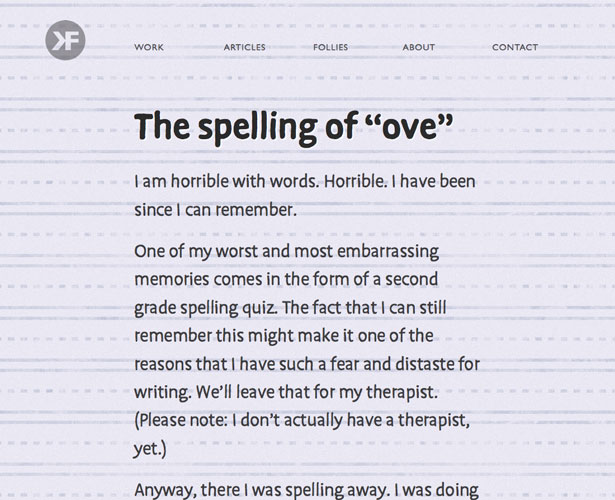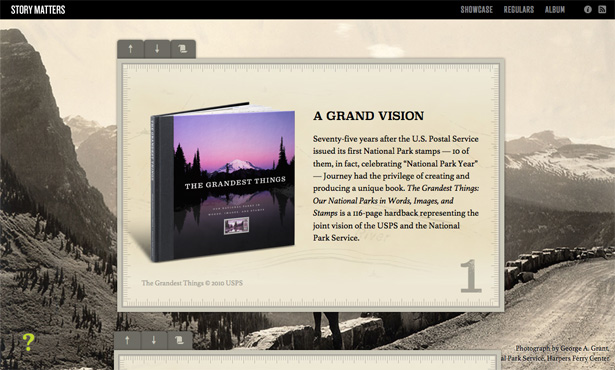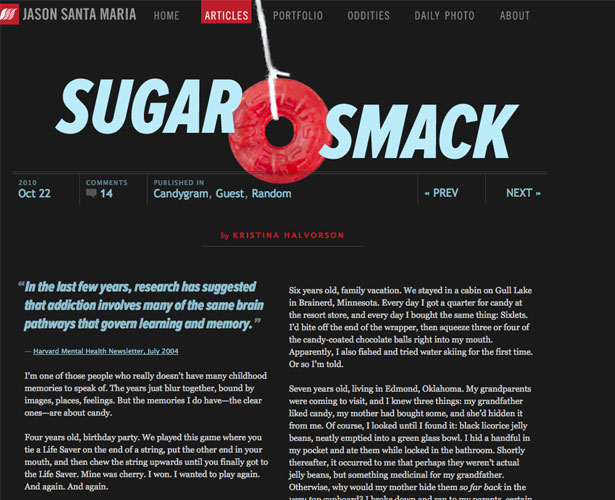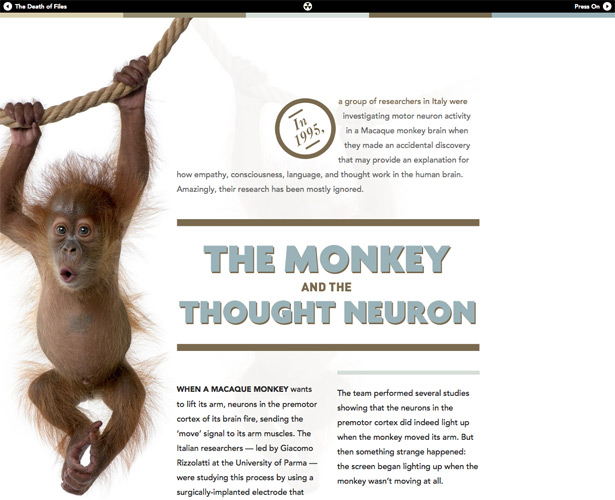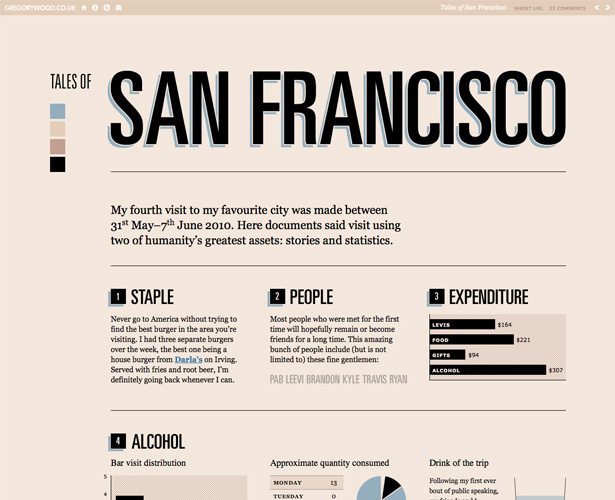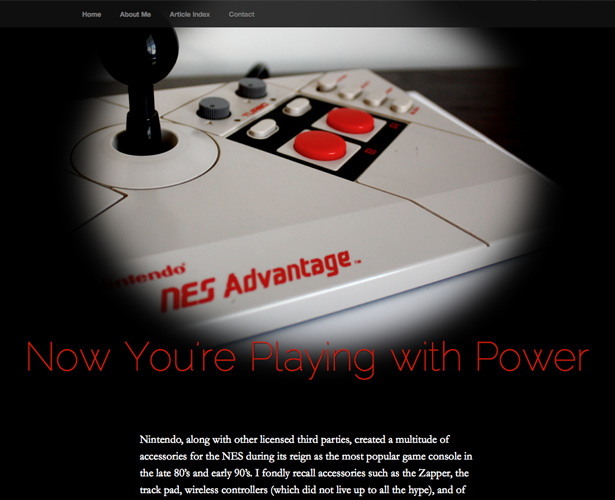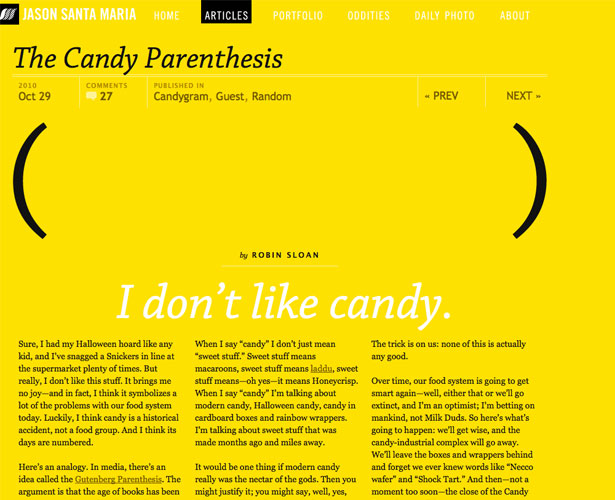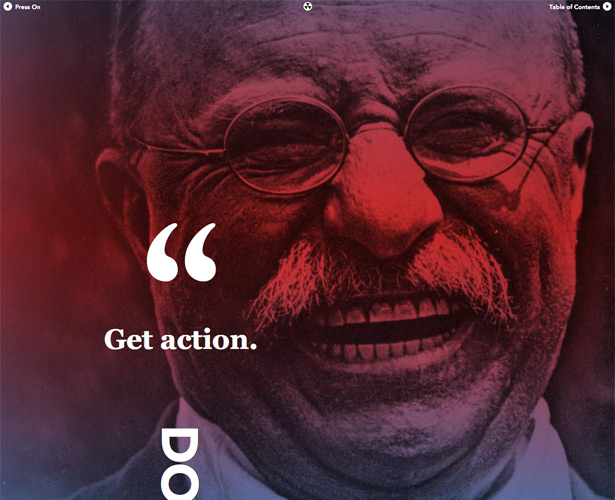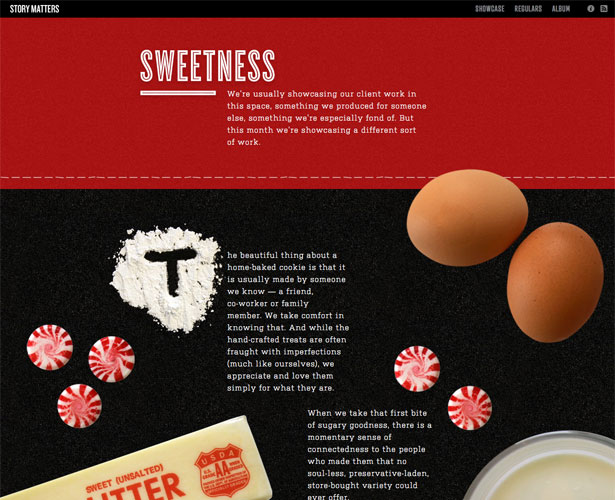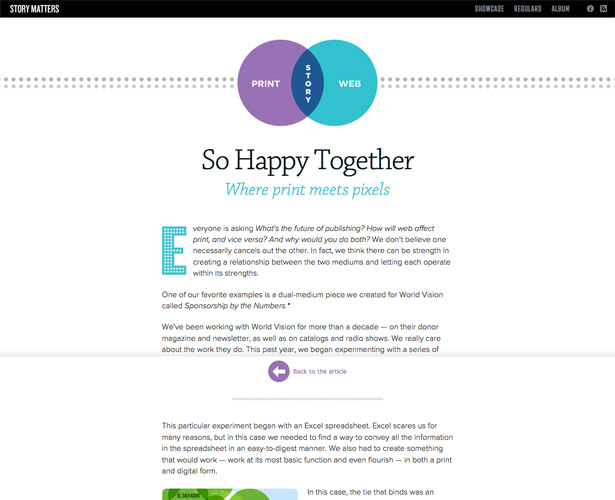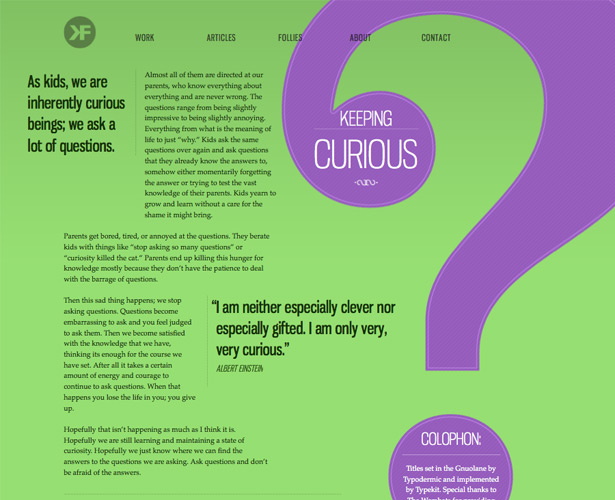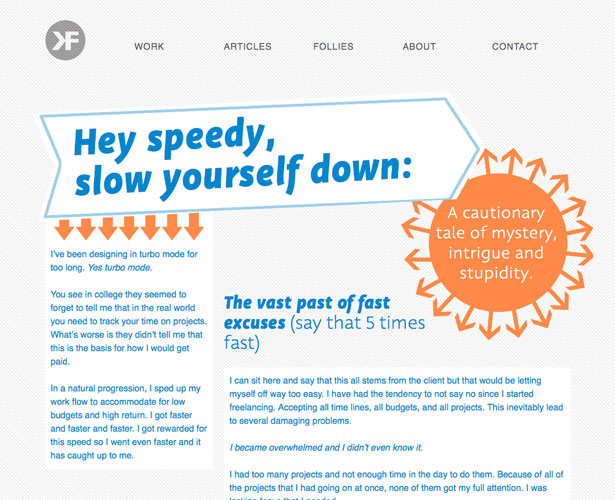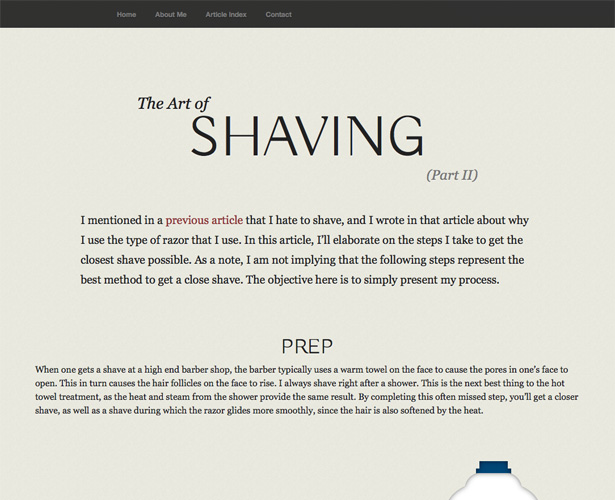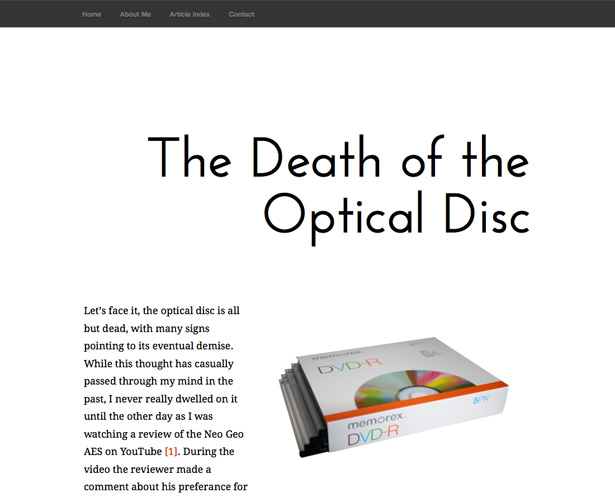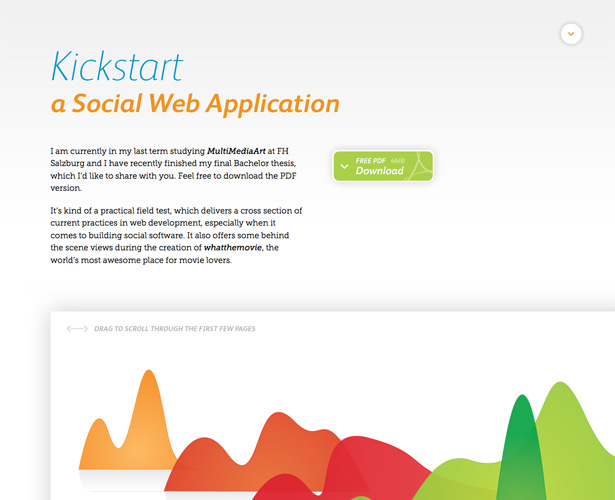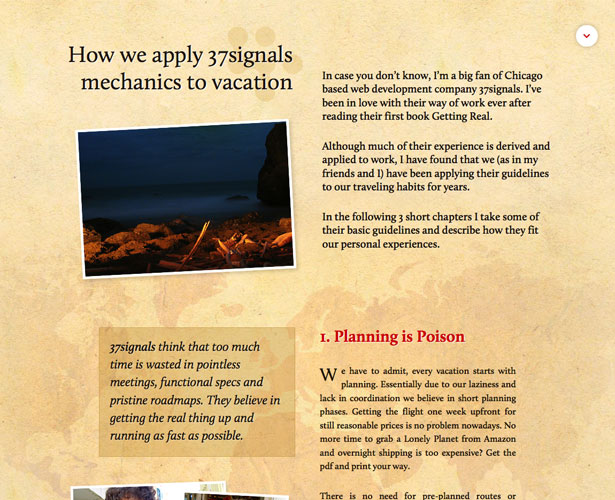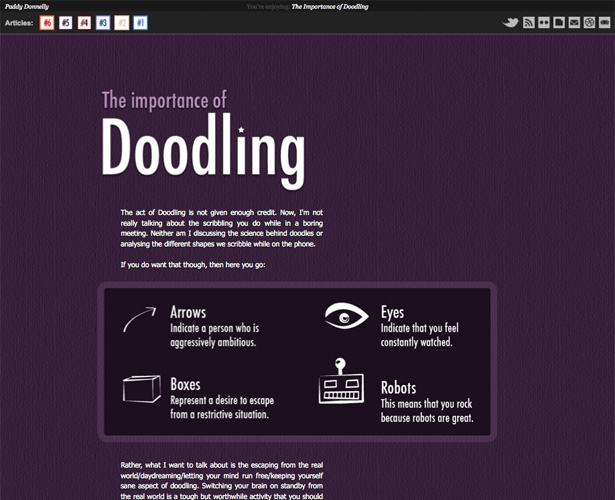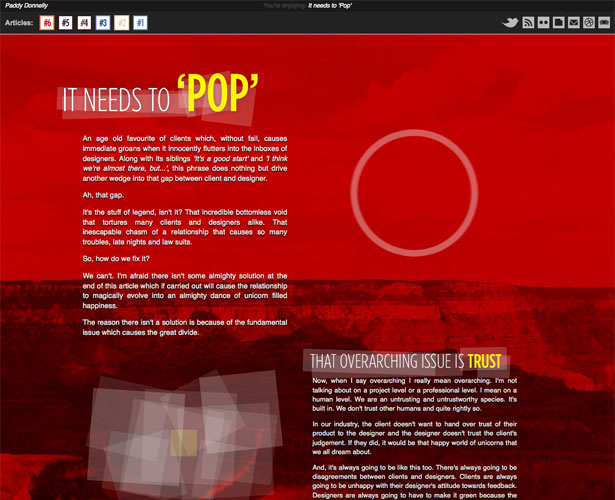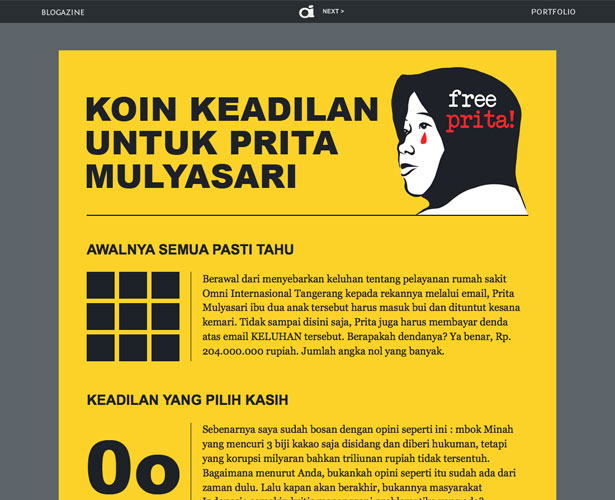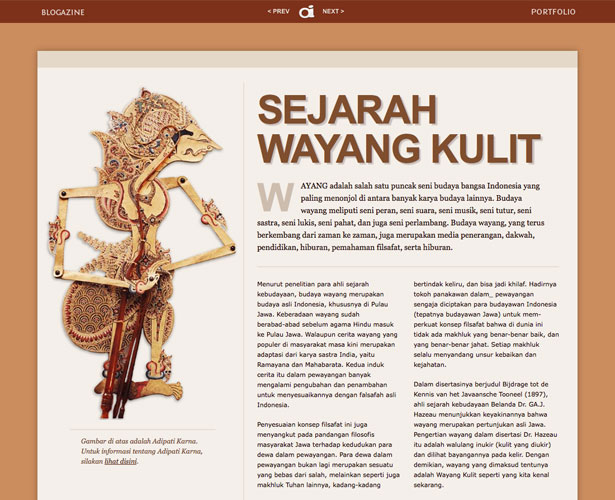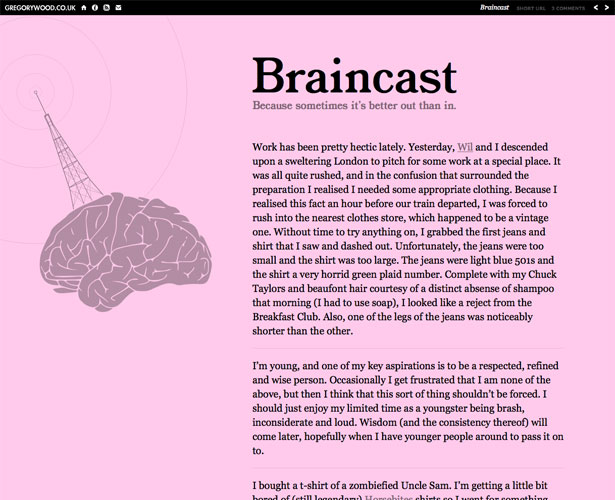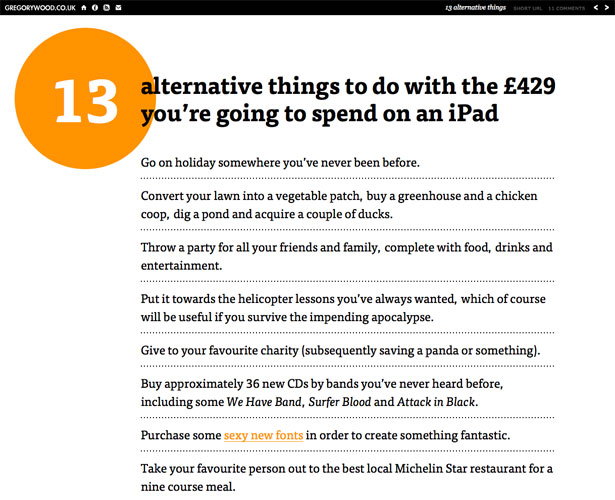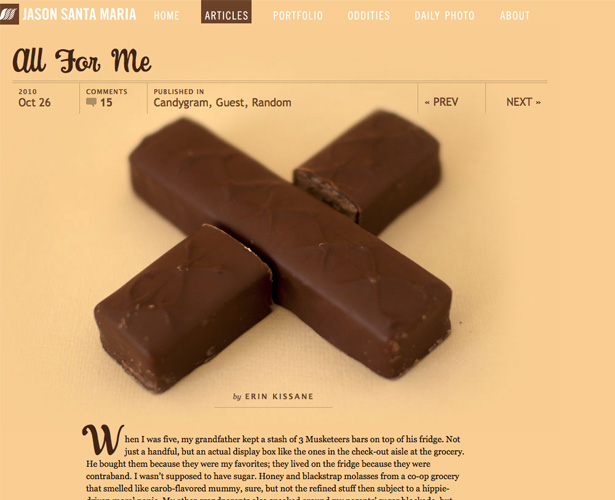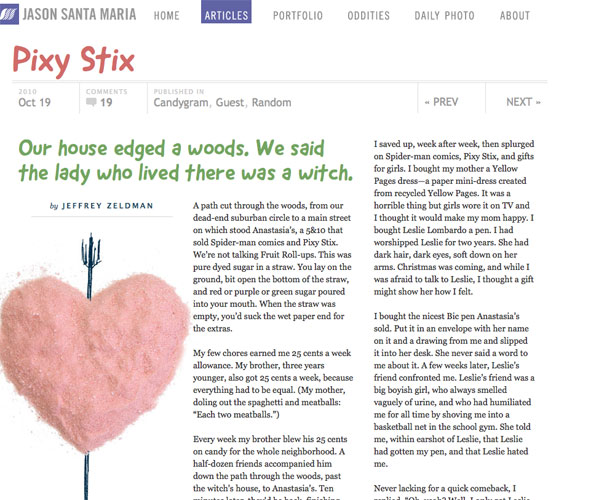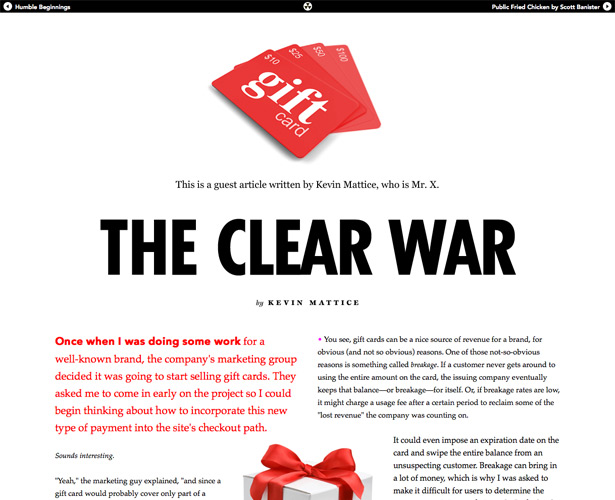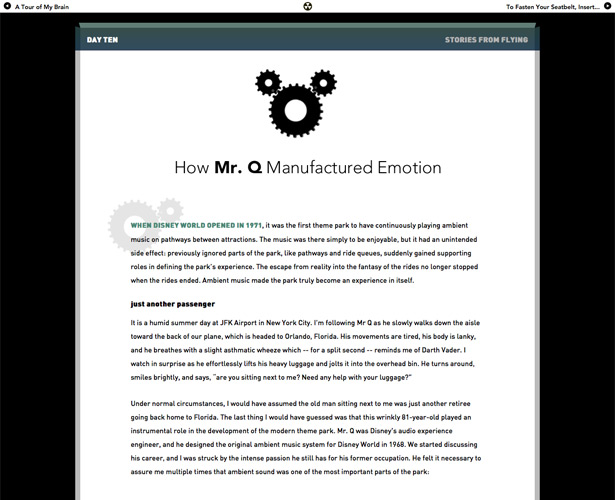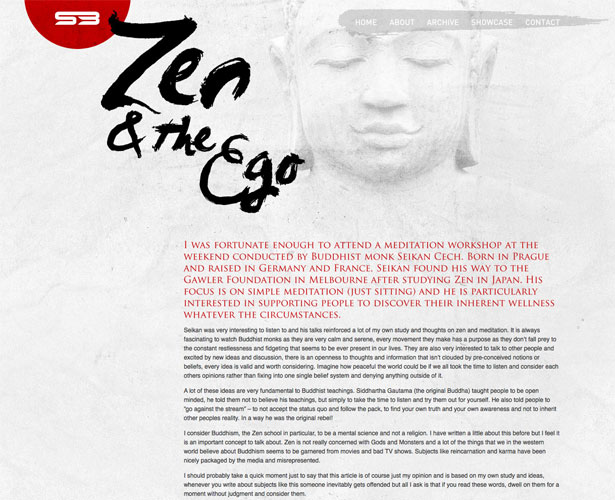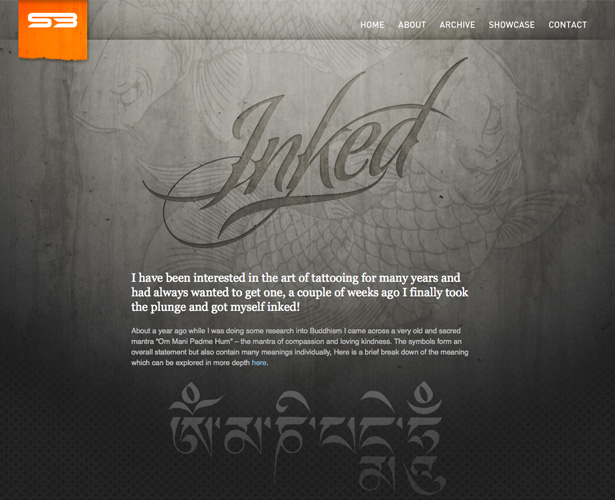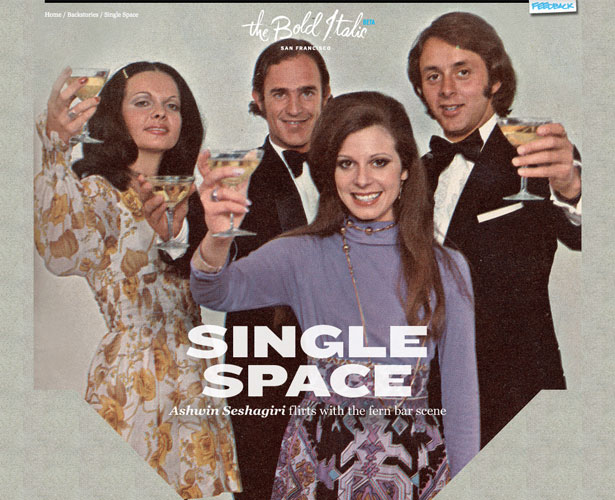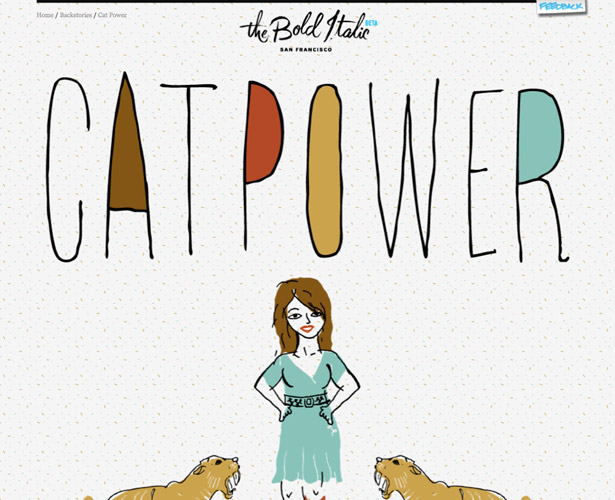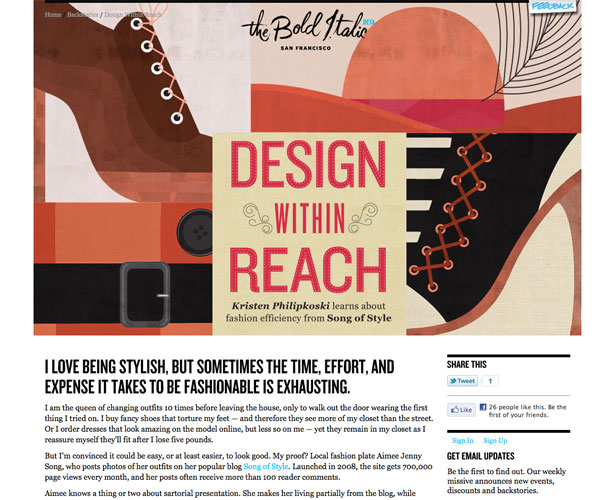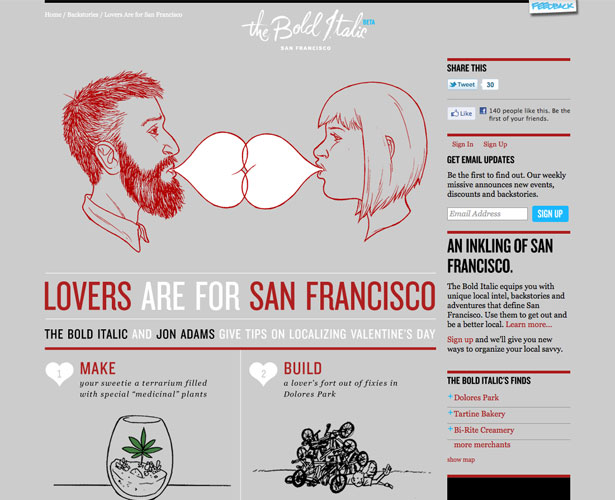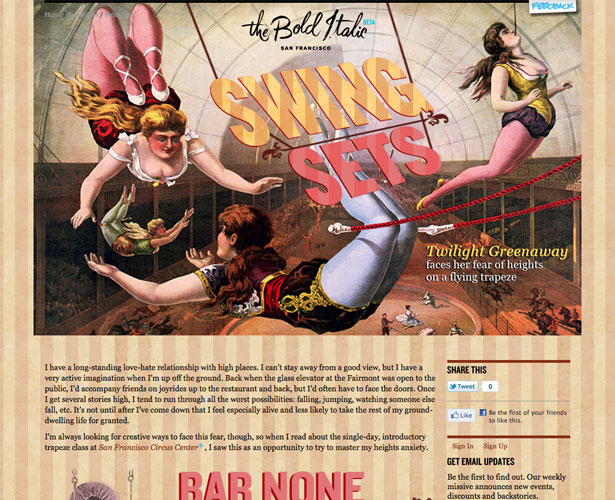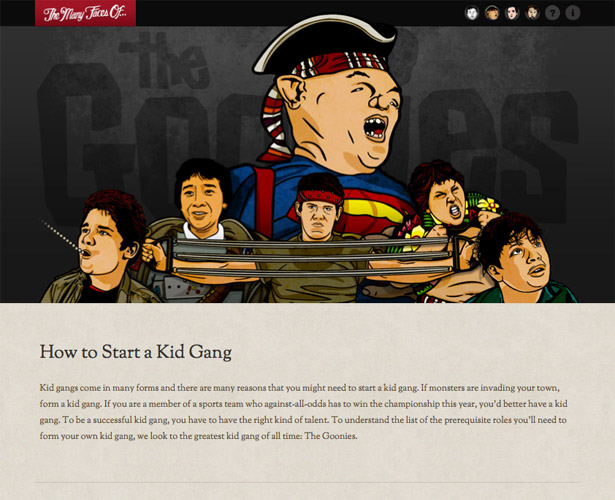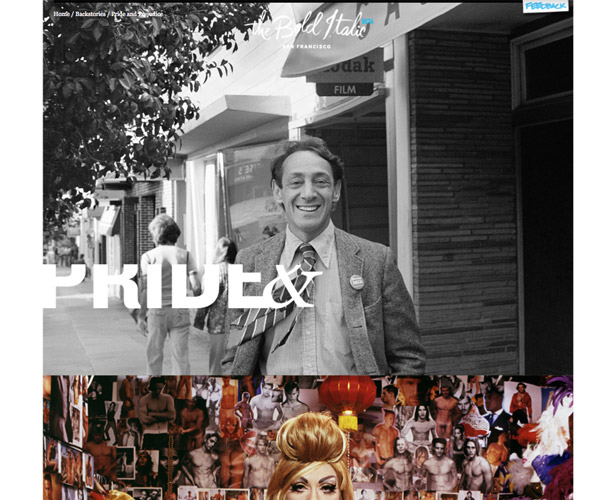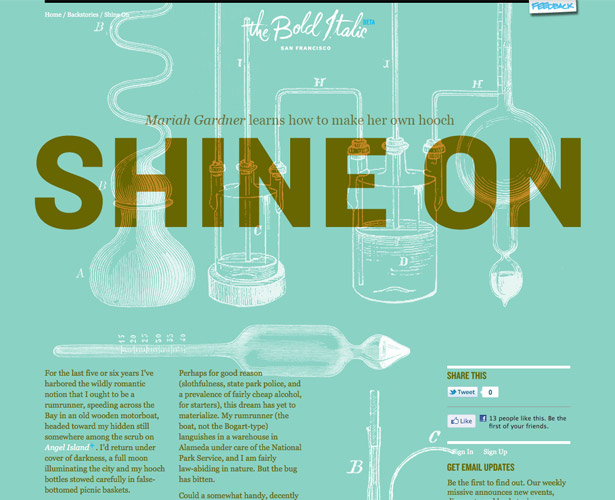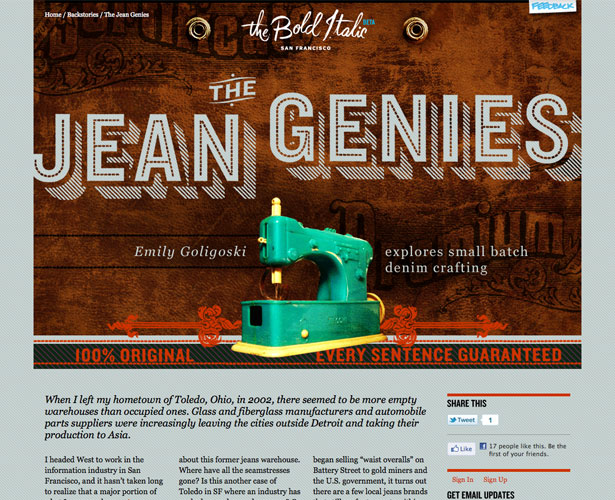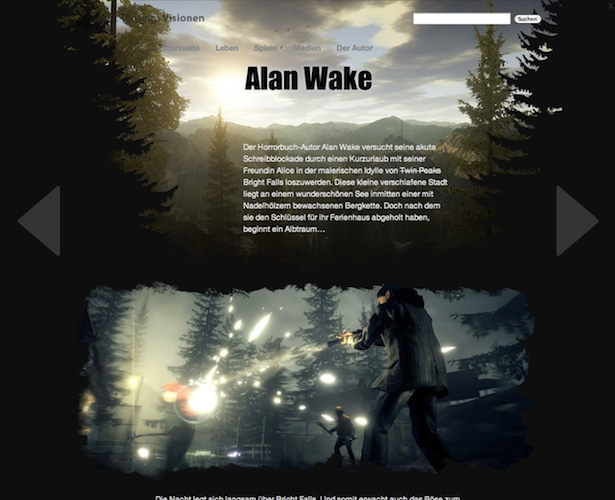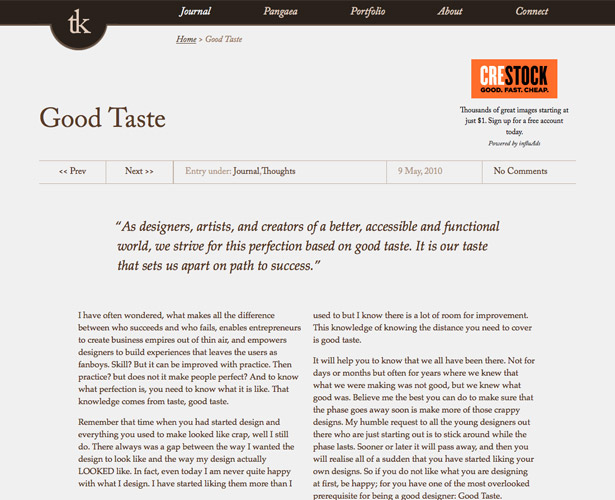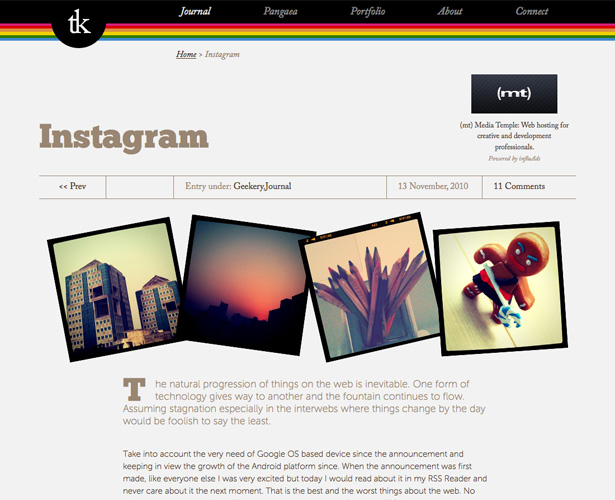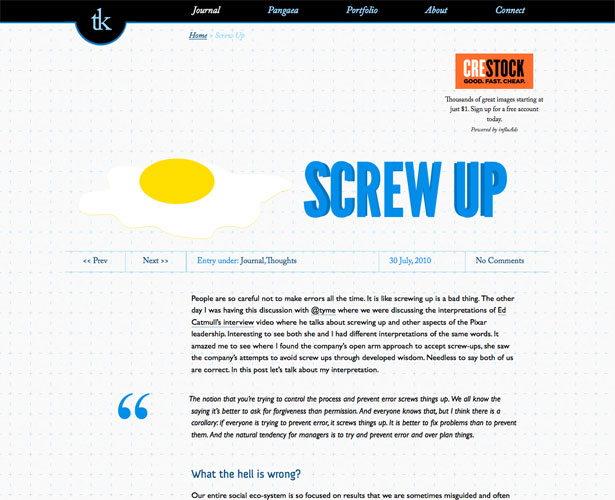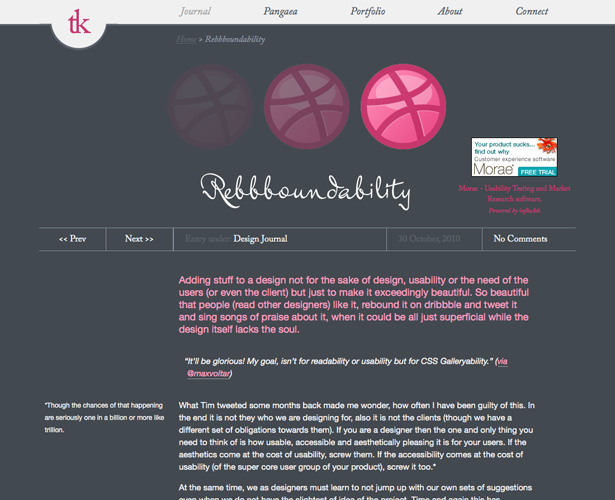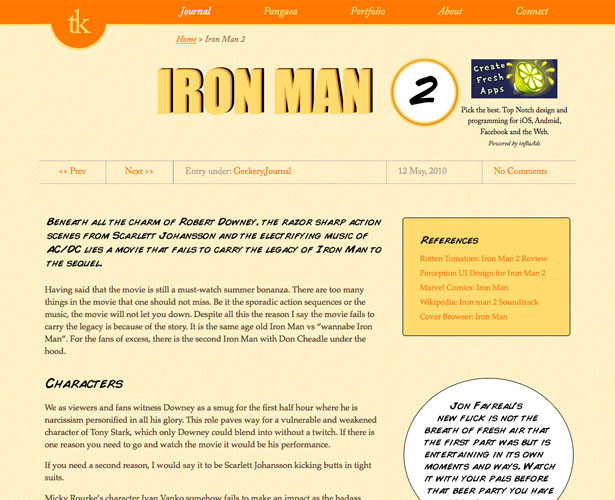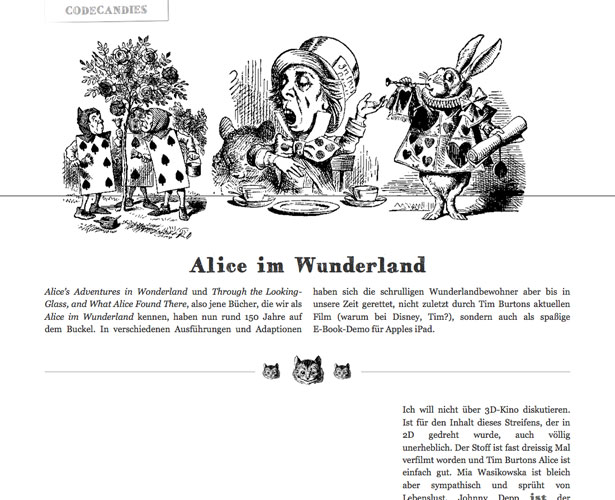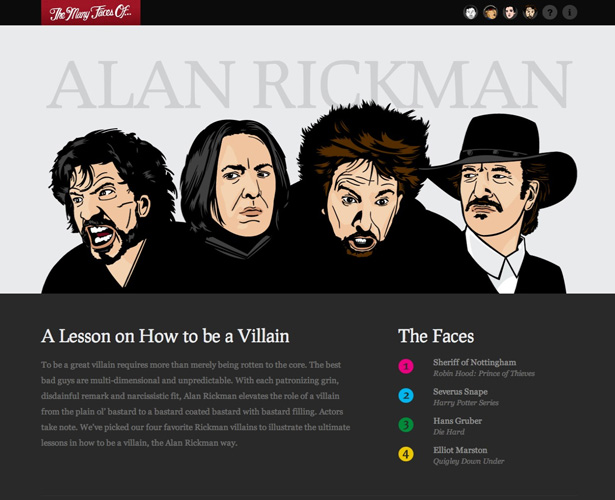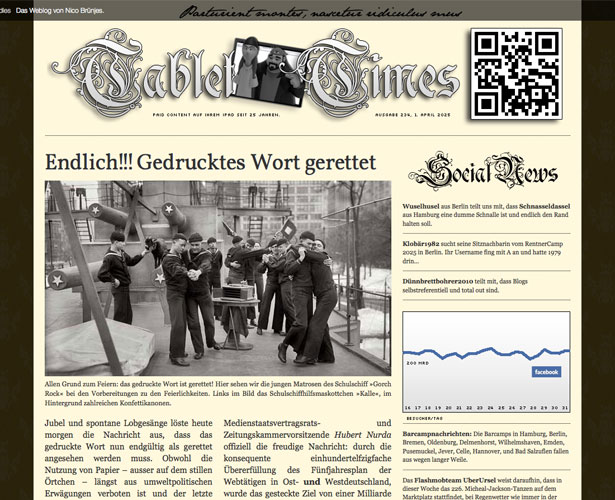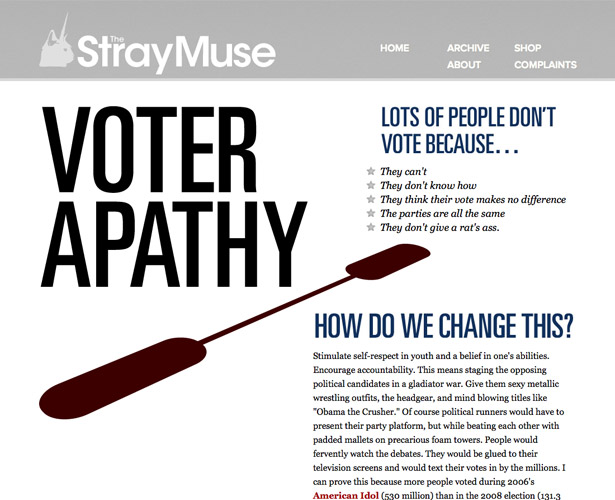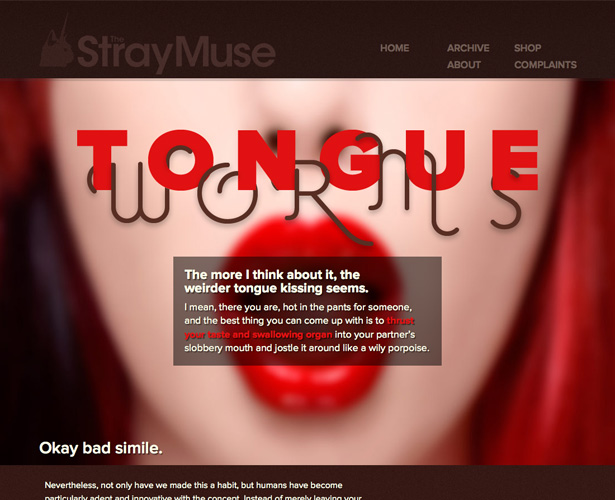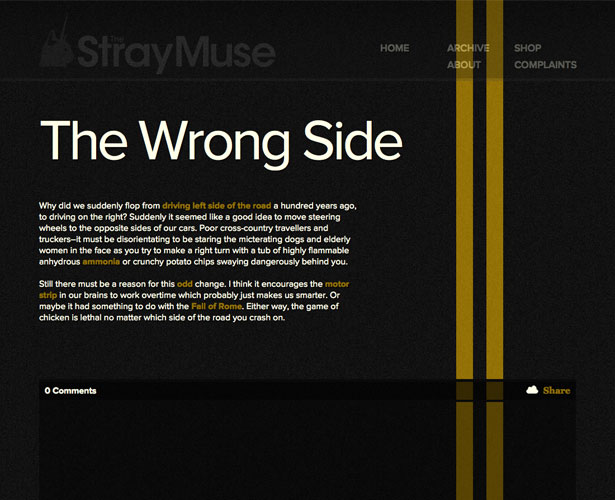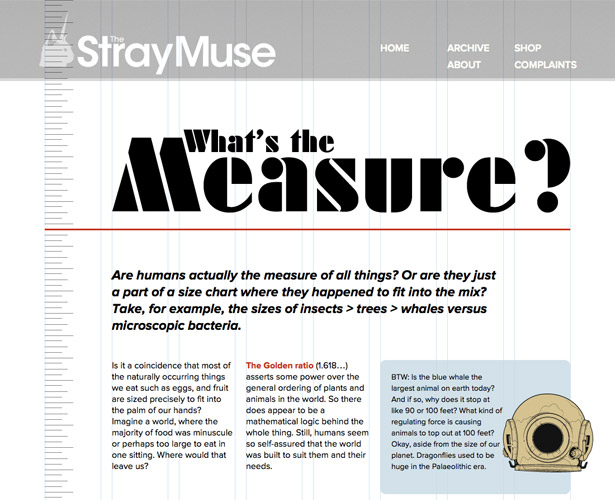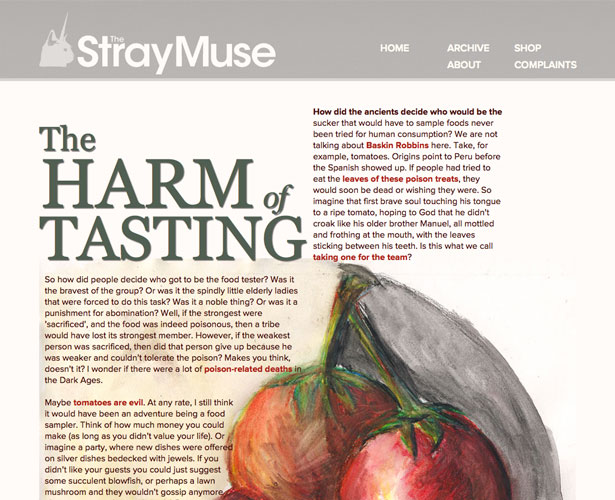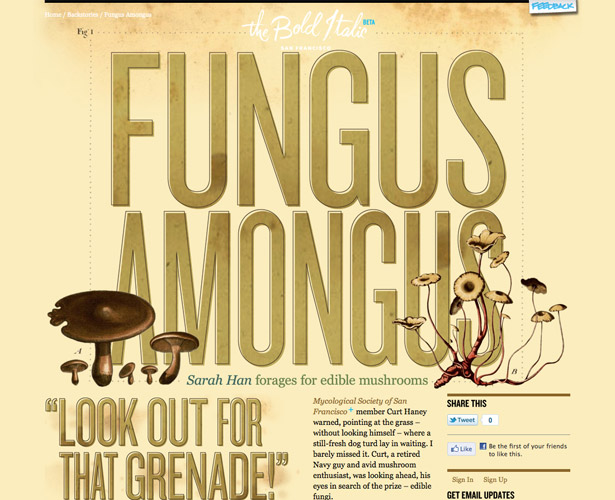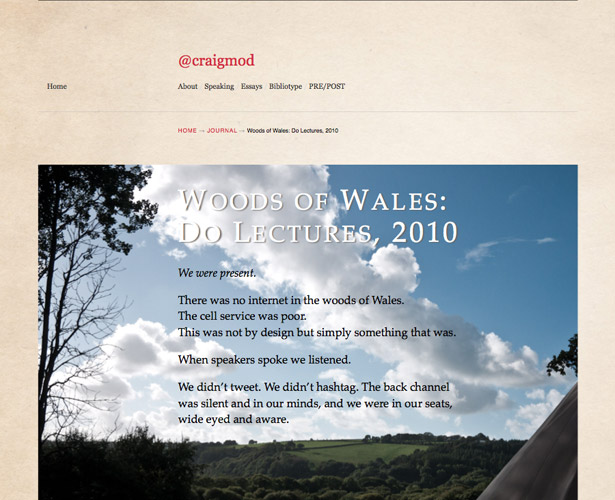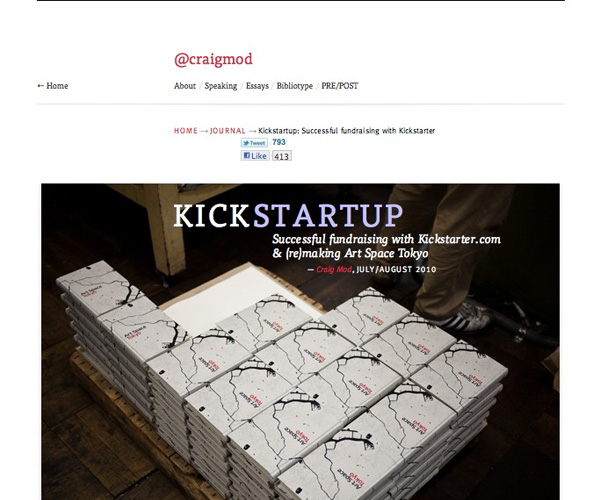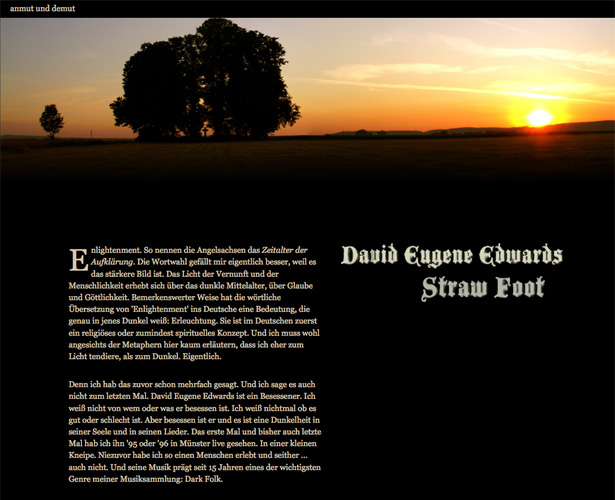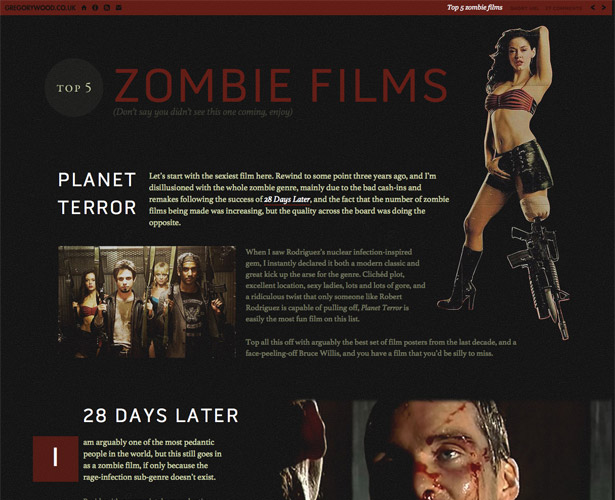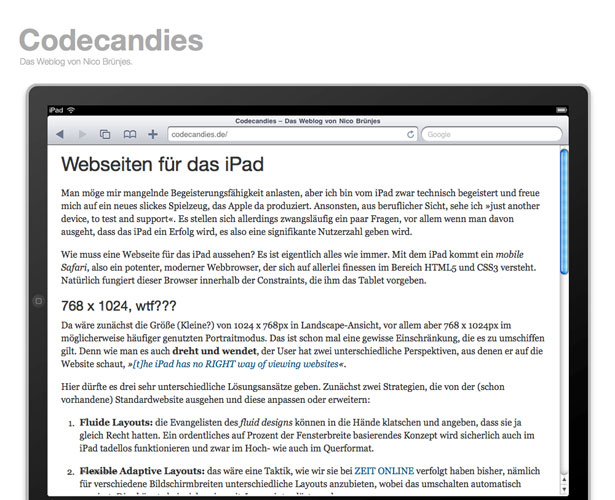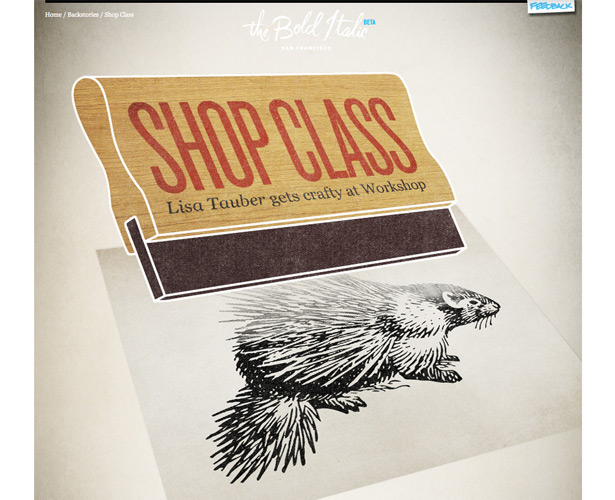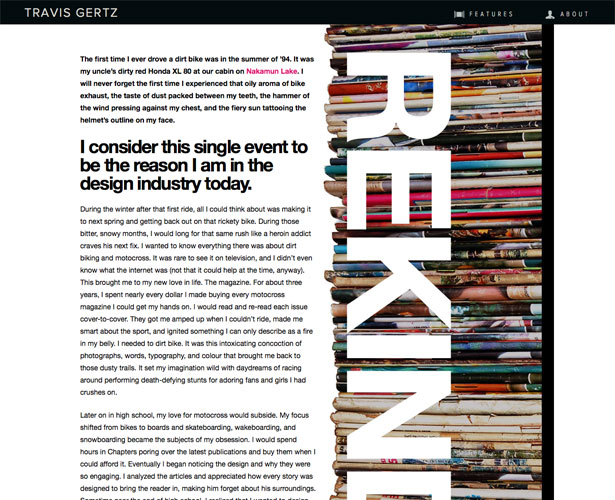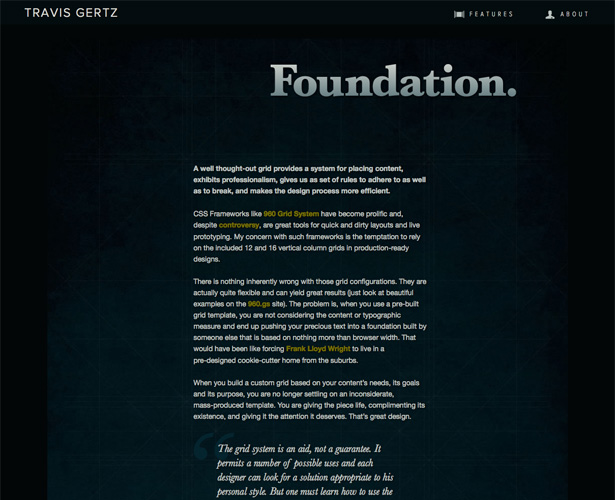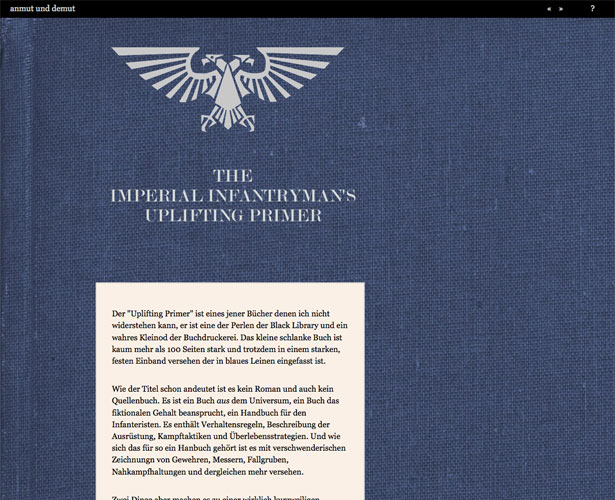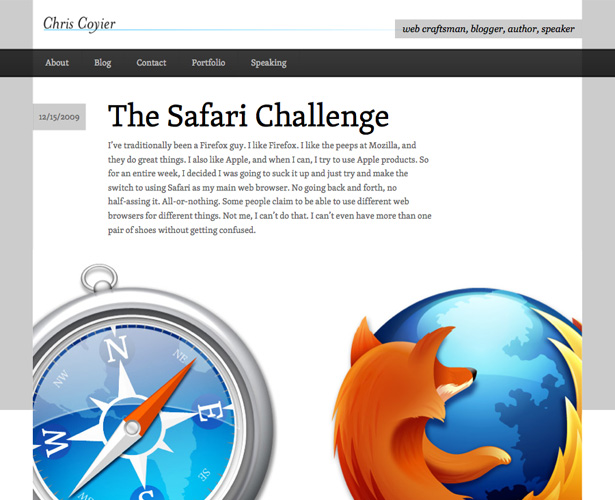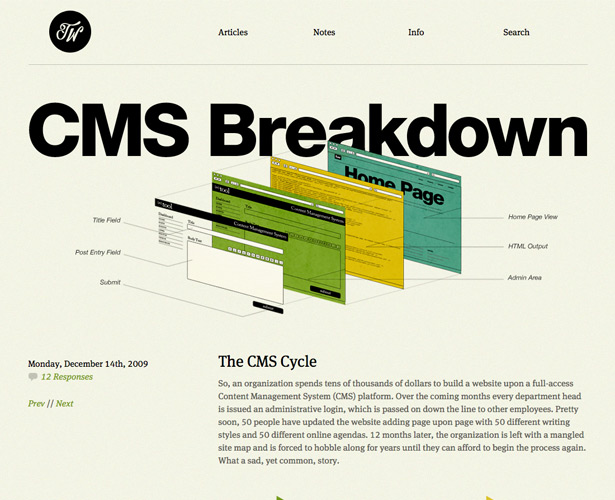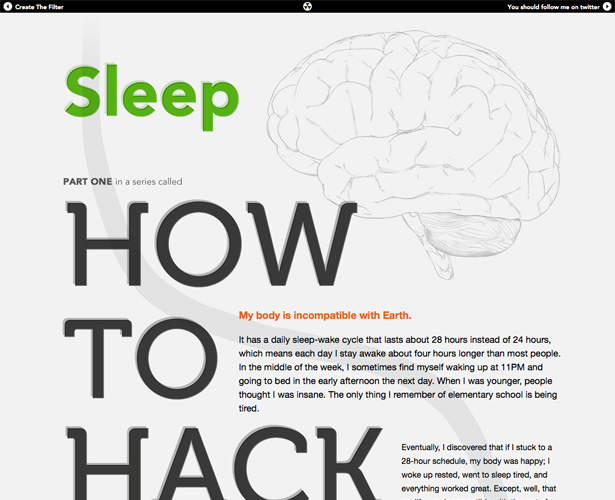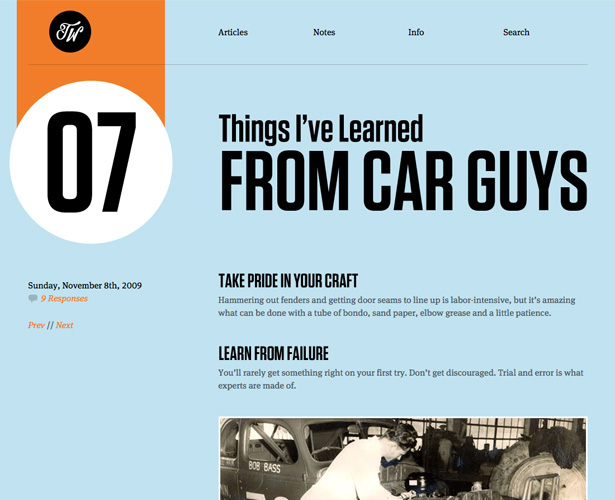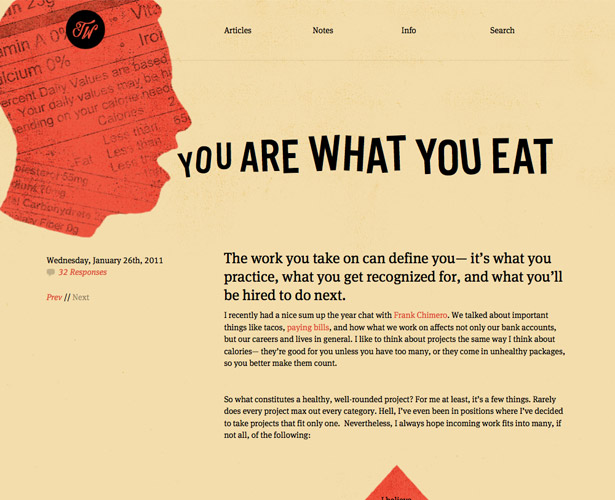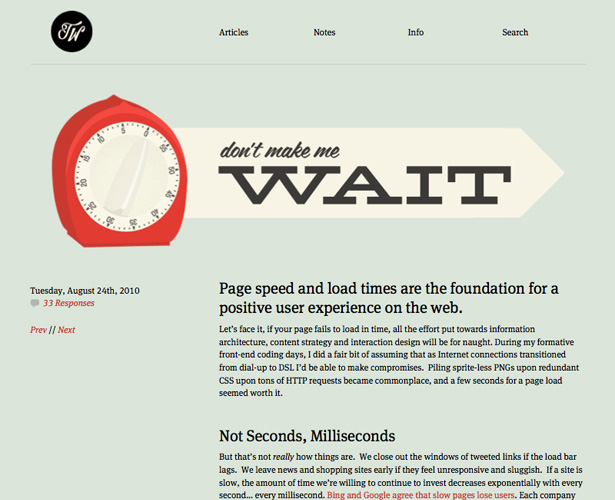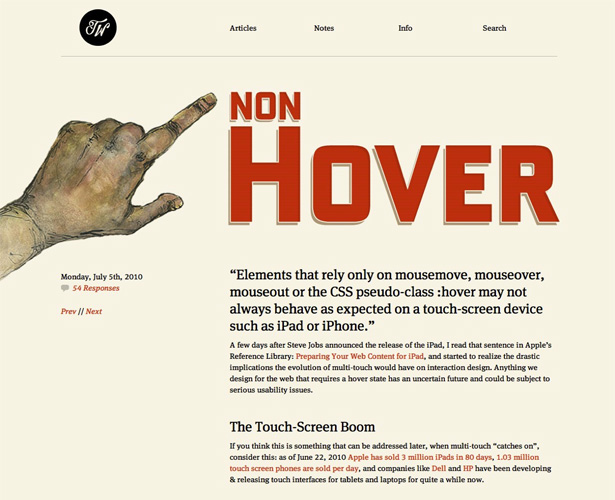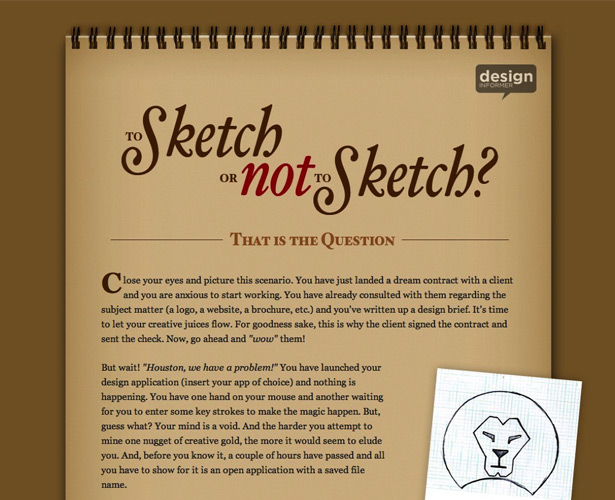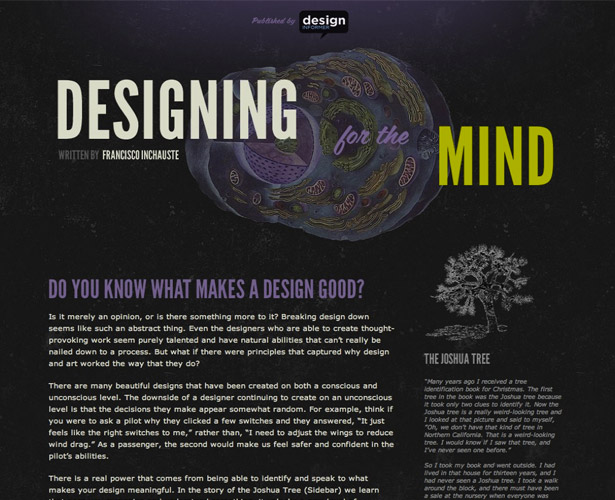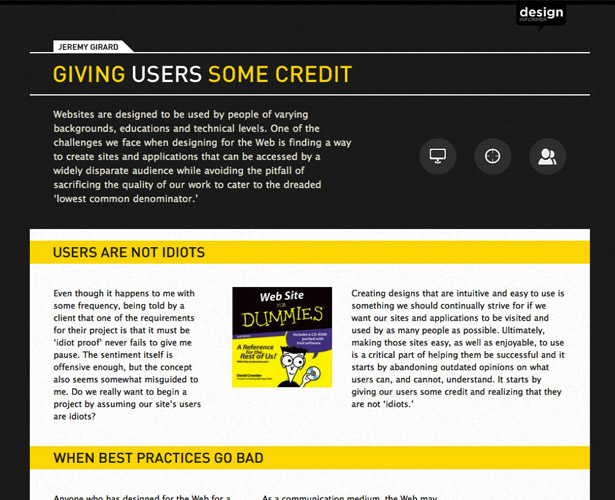 Art-directed blogs (sometimes also referred to as "blogazines") are making strides in the blogosphere.
Art-directed blogs (sometimes also referred to as "blogazines") are making strides in the blogosphere.
Looking at them, it can be tempting to jump on the bandwagon and start creating your own art-directed posts. But it's not that straightforward.
There are a lot of pros and cons to designing each and every post on your blog.
Below, we've covered the most important advantages and disadvantages to creating custom designs for your blog posts and we also included a collection of some great examples.
Please feel free to share your thoughts about art directed blogs in the comments...
Pros of Art-Directed Blogs
Art-directed blogs are often beautiful and a lot more fun to read than your average, run-of-the-mill blogs.
A well-designed post adds so much to the reading experience that you can almost count on visitors spending more time on your blog, and browsing around to see what other creative masterpieces you've come up with. There are a lot of pros to creating an art-directed blog, not the least of which are these:
There's More Room for Creativity
Marcel Uekermann: Vertical Farming
An art-directed blog gives you the option to create new designs whenever you write a new post. You can write posts based on the kinds of designs you want to create, or create designs based on the content you want to write. You have complete creative control.
Art-directed posts are a great way to exercise as much or as little creativity as you want. You can do basic things like changing fonts and backgrounds, or go all out and completely change the layout and format for each post.
Suitable for a Variety of Content
Kyle Fiedler: The Spelling of "ove"
One of the greatest things about art-directed posts is that they can adapt to whatever the content requires.
If you have a post that's very image-heavy, you can design your post around that. If your post is more text-centered, then you can design for easy readability. And if you need charts, graphs, videos, or any other kind of content, you can adapt to fit those, too.
This is a big advantage to blogs that often post a variety of content. But even if your content is more consistent, being able to tailor post design can still help.
Maybe one post is very serious, and you want a more formal design. Another post might be light-hearted and fun, and the design should reflect that. In either case, having a design that can be tailored to what's on the page adds to the user experience.
They Attract More Attention
This might change as art-directed blogs become more popular, but at present, a well-designed blog post can attract a lot of attention. There are only so many blogs out there that are using art-directed posts well, and they get attention for their innovation.
Again, as more blogs adapt to this, there's likely going to be a shift in how much attention they get. But well-designed posts will still stand out in the sea of millions of blogs out there.
Can Serve as a Portfolio
Jason Santa Maria: Sugar Smack
For designers who don't have a huge body of work yet, an art-directed blog can be a great way to show off your design skills. It's also a good way to show clients that you can design to their needs, based on what will best showcase what they have to say.
Make sure that your art-directed posts, and the content they surround, is something you'd want to share with clients, though, as a bad impression can be hard to undo.
It's Fun
Dustin Curtis: The Monkey and the Thought Neuron
If you like designing and coding (which, if you're reading this, is pretty likely), then creating custom designs for each post on your blog is likely something you'll enjoy doing. Designers generally like designing, and too often don't get to work on their own projects enough.
An art-directed blog can solve that problem. Having a definite posting schedule can give designers the excuse they need to focus on their own work for awhile, instead of always putting client work first. While client work is obviously important, a designer who never takes time out to work on their own fun projects can get burnt out pretty quickly.
Cons of Art-Directed Blogs
Art-directed blogs are still a relatively small niche within the blogosphere. There are only a few dozen blogs out there that are seriously experimenting with custom post designs, though new ones are cropping up all the time. Out of the millions of blogs out there, that's not even a drop in the bucket. So why aren't more bloggers jumping on the art-directed bandwagon?
It Takes Longer to Create Each Post
Gregory Wood: Tales of San Francisco
With a regular blog, you write a post, proofread and/or edit it, find an image or two to go along with it, and publish it. A short post might only take you a few minutes to create, while a longer one might take a few days. But in either case, putting new content up on a daily or weekly basis isn't a big deal.
Individually crafting not just the content, but also the design, for each post for your blog is much more time-consuming. Many art-directed blogs only publish new content once a month, to give themselves time to create the designs for each post. This works well if your blog strategy is based entirely around quality not quantity. But remember that quantity can have some definite benefits, too, not the least of which is that it tends to bring in more traffic (especially from search engines).
Consider carefully whether art-directing each post is something you really want to commit to, or if your blog and your content would be better-suited to a more traditional format.
It's Harder to Post Timely Content
Building on the last item, an art-directed blog shouldn't be based around current trends, pop culture, or any other topic that relies on timely posts.
When the design of a post can take you days or weeks in addition to the time it takes writing it, you can pretty much bet that whatever trending item you're trying to post will be old-news by the time you get it posted.
One alternative here is to mix in regular blog posts for timely content with art-directed posts for "featured" content. This strategy overcomes a number of potential drawbacks to art-directed posts.
Requires CSS and HTML Skills
Jason Santa Maria: The Candy Parenthesis
Some designers don't bother much with CSS and HTML coding, and just outsource that part of their designs. That's not going to work with art-directed posts (or it's going to get very expensive). You'll need to know how to code your posts to work properly within the blog platform you've chosen to use.
While there are plugins that can make it easier to art-direct your posts, they still require some coding knowledge in order to best utilize them. If you're not into coding, you might want to skip the art direction entirely.
It Can Confuse Repeat Visitors
Think about how much people freak out when Facebook or Twitter gets a redesign.
It can be a bit jarring any time you frequent a website and they suddenly get a redesign. The same thing applies with your blog. If every page on your site looks entirely different from the last page, it can be disorienting.
The answer here is to make sure that some common thread is included on every page. This could be something like the same header or logo, or something else entirely. Get creative with it. But remember that visitors often need something to ground them in the experience, and offer them something.
Can Dilute Your Brand Identity
A lot of people work very hard to create a certain personal brand in their business dealings. They have a specific image they portray, and do everything they can to reinforce that image. An art-directed blog can either further reinforce that image, or tear it to shreds.
If you have a specific brand you're trying to build, make sure that the designs you create for your blog posts reinforce that brand. It's too easy to undo the hard work you've put in with a few designs that don't quite fit. If your identity is very polished and professional, make sure all your art-directed posts are the same. If you're casual, your posts should be, too.
If you haven't built a brand identity, then this isn't as vital. But consider using your blog posts as the starting point for creating an identity, as it can put you in a better position within your industry, and make you more memorable to those you encounter on a daily basis.
60 Great Examples of Art Directed Posts
Story Matters: Sweetness
Story Matters: So Happy Together
Kyle Fiedler: Keeping Curious
Kyle Fiedler: Hey Speedy, Slow Yourself Down
I Am Steve: The Art of Shaving, Part II
I Am Steve: The Death of the Optical Disc
Marcel Uekermann: Kickstart a Social Web Application
Marcel Uekermann: How We Apply 37signals Mechanics to Vacation
Paddy Donnelly: The Importance of Doodling
Paddy Donnelly: It Needs to 'Pop'
Om Ipit: Koin Keadilan Untuk Prita Mulyasari
Om Ipit: Sejarah Wayang Kulit
Gregory Wood: Braincast
Gregory Wood: 13 Alternative Things to Do with the £429 You're Going to Spend on an iPad
Jason Santa Maria: All For Me
Jason Santa Maria: Pixy Stix
Dustin Curtis: The Clear War
Dustin Curtis: How Mr. Q Manufactured Emotion
Scott Brown: Zen and the Ego
Scott Brown: Inked
The Bold Italic: Single Space
The Bold Italic: Cat Power
The Bold Italic: Design Within Reach
The Bold Italic: Lovers Are for San Francisco
The Bold Italic: Swing Sets
The Many Faces Of...The Goonies
The Bold Italic: Pride and Prejudice
The Bold Italic: Shine On
The Bold Italic: The Jean Genies
Marc Tonsings Vicionen: Alan Wake
Tuhin Kumar: Good Taste
Tuhin Kumar: Instagram
Tuhin Kumar: Screw Up
Tuhin Kumar: Rebbboundability
Tuhin Kumar: Iron Man 2
Codecandies: Alice in Wunderland
The Many Faces Of...Alan Rickman
Codecandies: TabletTimes
The Stray Muse: Voter Apathy
The Stray Muse: Tongue Worms
The Stray Muse: The Wrong Side
The Stray Muse: What's the Measure
The Stray Muse: The Harm of Tasting
The Bold Italic: Fungus Amongus
Craig Mod: Woods of Wales: Do Lectures 2010
Craig Mod: Kickstartup
Anmut Und Demut: David Eugene Edwards - Straw Foot
Gregory Wood: Top 5 Zombie Films
Codecandies: Webseiten fur das iPad
The Bold Italic: Shop Class
Travis Gertz: Rekindled
Travis Gertz: Foundation
Anmut Und Demut: The Imperial Infantryman's Uplifting Primer
Chris Coyier: The Safari Challenge
Trent Walton: CMS Breakdown
Dustin Curtis: Sleep (Or How to Hack Your Brain)
Trent Walton: Things I've Learned From Car Guys
Trent Walton: You Are What You Eat
Trent Walton: Don't Make Me Wait
Trent Walton: Non Hover
Design Informer: To Sketch or Not to Sketch?
Design Informer: Designing for the Mind
Design Informer: Giving Users Some Credit
Written and compiled exclusively for WDD by Cameron Chapman.
What do you think of art directed blogs and their pros and cons? Feel free to leave your thoughts below!


